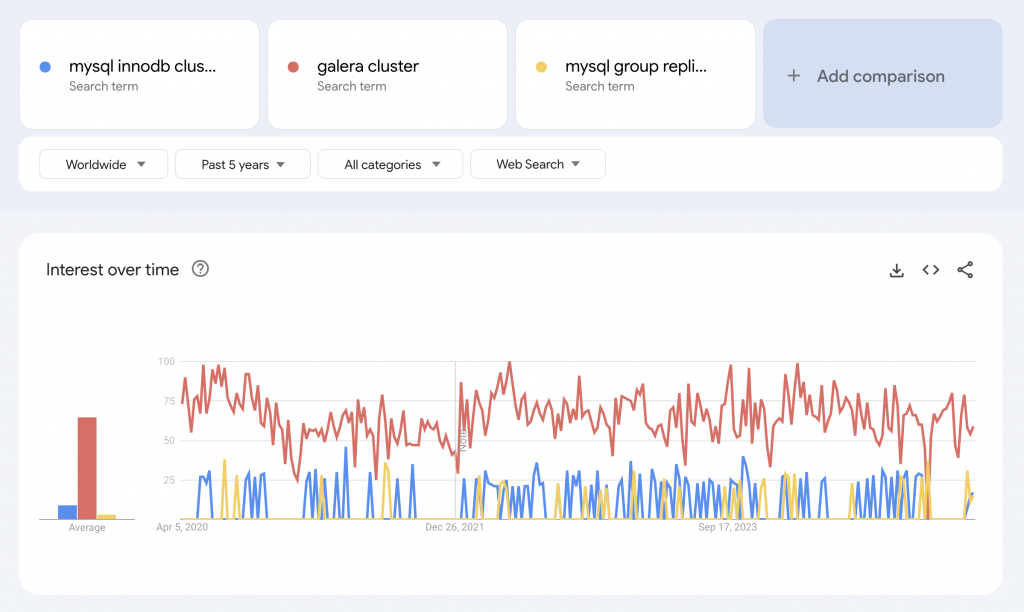MySQL 8.4 has two good options for High Availability clusters: Galera Cluster (and Percona XtraDB Cluster (PXC)) plus MySQL InnoDB Cluster. Both solutions are now mature enough, so what is the deciding factor? Workload characteristics, application compatibility (Galera is virtually synchronous; InnoDB Cluster offers 2 modes – single primary mode, which is one instance being read-write, with the rest being read only, and multi-primary mode, which is closer to what Galera Cluster is) and operational preferences, most likely will decide which one comes out top in 2025, is what we aim to answer at next week’s webinar.
Due to the lack of real-world usage statistics (we can tell you how many Galera Cluster downloads we have, for example, or even customer numbers, but we won’t have anything to compare against), we look at proxy statistics, like Google Trends data – here comparing 3 search terms: MySQL InnoDB Cluster, Galera Cluster and also MySQL Group Replication.
So some preamble on what we will talk about in the webinar:
- Basic write throughput with low contention (InnoDB Cluster single primary, multi-primary, and Galera Cluster)
- Basic read throughput
- Write throughput with high contention (we all know this as the “hot row” problem, and this will help us see write conflicts)
- Mixed workload (OLTP styled, read/write)
- Node failure & recovery testing (clean stops, abrupt termination)
We won’t be running this on crazy large machines – they’ll all be cloud instances, with reasonably small hardware. As always, we will also ensure that we focus on helping you maximise strengths, and minimise weaknesses.
We can’t wait to see you at the upcoming webinar!
